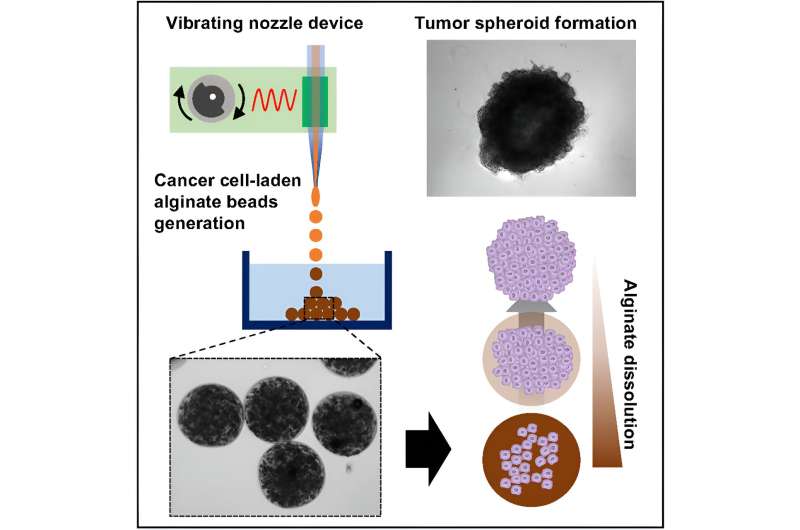Credit: Device (2024). DOI: 10.1016/j.device.2024.100255
Depending on their location, cancer cells within a three-dimensional (3D) tumor structure can have different microenvironments. Cells in the core of the tumor receive less oxygen (hypoxia) and nutrients than those in the periphery. These varying conditions can drive differences in cell growth rates and drug sensitivities, highlighting the need to study 3D tumor models in lab settings. Until recently, conventional methods used to create such tumor spheroids were time-consuming, produced inconsistent results and involved high setup costs.
Investigators at Brigham and Women's Hospital, a founding member of the Mass General Brigham health care system, developed a low-cost, high-throughput device that can reliably generate uniform tumor spheroids. The study, now published in Device describes how to assemble the "Do-It-Yourself (DIY)" device from parts totaling less than $7, including a coin-vibrating motor commonly found in cell phones.
By vibrating a suspension of cancer cells flowing rapidly out of a fine nozzle, the team was able to create nearly 4,000 equally sized droplets per minute. They found that cancer cells within the droplets aggregated to form tumor spheroids with hypoxic cores and exhibited proliferation markers typical of in vivo tumors.
The tumor spheroids also demonstrated clinically typical responses to chemotherapy, with cancer cells at the hypoxic core driving tumor survival and drug resistance. These findings, the authors suggest, could help overcome the limitations of traditional two-dimensional cancer cell cultures and provide insights for improved drug development.
"We developed a simple, DIY method for reliable preclinical testing of anti-cancer drugs," said corresponding author Hae Lin Jang, Ph.D., of the Center for Engineered Therapeutics. "The cost of devices often acts as a barrier to cancer research. Low-cost, simple-to-operate systems like ours are essential to democratize cancer research and make science more accessible."
First author Bumseok Namgung, Ph.D., of the Center for Engineered Therapeutics added, "Our simple and low-cost system facilitates the anti-cancer drug research by enabling high-throughput drug screening."
More information: Bumseok Namgung et al, An inexpensive "do-it-yourself" device for rapid generation of uniform tumor spheroids, Device (2024). DOI: 10.1016/j.device.2024.100255
Journal information: Device
Provided by Brigham and Women’s Hospital
























